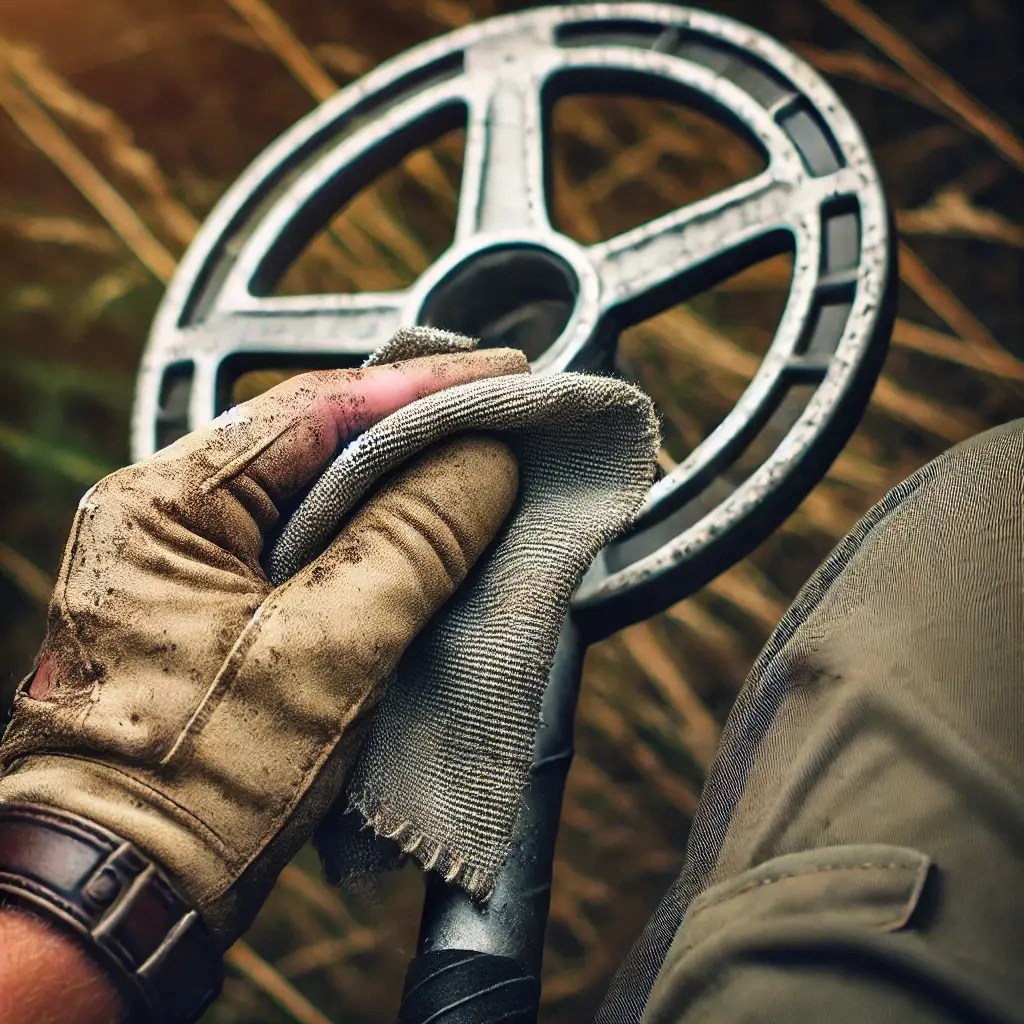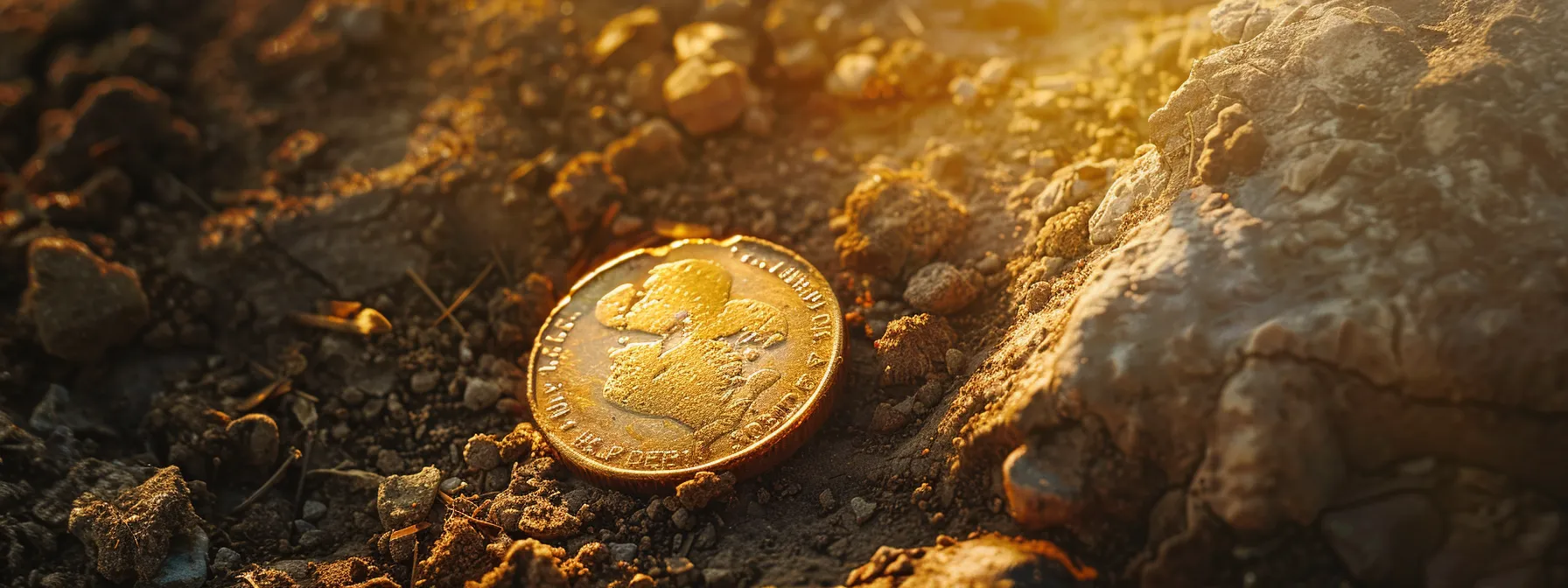
Loot Detective is about helping fellow treasure hunters find success. Whether new to metal detecting or looking to enhance your skills, this guide provides metal detecting tips and tricks to help you find more treasures.
Basic Metal Detecting Tips and Tricks for Success
Proper Metal Detector Sweep Technique
Keeping the Coil Parallel
Maintaining a level swing with the coil parallel to the ground is crucial for detecting. This ensures the detector can scan the ground evenly, providing consistent signals. Avoid lifting the coil at the end of each swing; keep it as close to the ground as possible without touching it.
Overlapping Your Swings
Overlap each swing by about 25-50% to avoid missing any targets. Think of it as mowing a lawn; overlapping ensures you cover the entire area thoroughly. Consistent overlap increases your chances of finding valuable items.
Understanding Signals
Interpreting Tones and Numbers
Different metals produce different tones and numbers on your detector. High tones often indicate valuable metals like silver or copper, while low tones might signify iron or trash.
Learning to distinguish these sounds and numbers will save you time and effort, and it’s one of Loot Detectives’ tips and tricks that enthusiastic detectorists easily overlook.
Spend time listening to the signals and understanding what each one means.
Use a metal detector with a target ID feature to help you identify different types of metal.
Practice in Test Gardens
Set up a test garden by burying various items at known depths in your backyard. Practice detecting these items to familiarize yourself with how they sound and appear on your detector. This hands-on practice helps build confidence and improves your ability to identify targets in the field.
Running a Bench Test
A bench test can help you understand your detector’s signals. Sit on a bench with the detector on your lap and wave various metal objects near the search coil. This helps you learn the different Target IDs and signals your detector makes.
Digging Techniques: Foundational Metal Detecting Tips and Tricks
Plug Hole Method

The plug hole method is an effective and tidy way to dig for targets, especially in grassy public areas. Here’s how to do it:
- Cutting the Plug: Use a digging tool to cut a horseshoe-shaped plug around the signal. Leave one side attached to keep the grass roots intact. A full circle-shaped plug is fine.
- Using a Towel: Place a towel next to the hole. Flip the plug to the opposite side and put any additional dirt on the towel. This keeps the area clean and makes the dirt easy to pour back in.
- Replacing the Plug: After retrieving the target, replace the plug and any dirt, pressing it down firmly. This helps the grass recover quickly.
Halving the Plug
If the target’s in the plug, you can narrow it down by cutting the plug in half. Scan each half separately and repeat until you pinpoint the item.
Advanced Metal Detecting Tips and Tricks
Pinpointing Targets
Using Your Detector’s Pinpoint Mode
Most metal detectors have a pinpoint mode that helps zero in on a target’s exact location. Switch to this mode once you’ve located a signal. Move the coil slowly over the target area until you hear the strongest signal. This will help you narrow down the spot to dig.
Effective Use of Handheld Pinpointers
While pinpointers may seem like a basic tool and not a tip or trick, they are highly effective and often included in metal detecting bundles. After locating the general area with your detector, use the pinpointer to precisely locate the target. This reduces the amount of digging and helps you retrieve items more efficiently.
Gridding and Systematic Searching
Setting Up a Grid Pattern
Create a grid pattern to ensure systematic searching of an area. Mark off sections using stakes or natural landmarks, and search each section thoroughly before moving on to the next.
Using a GPS app can help you stay organized and ensure you cover the entire area.
This method increases your chances of finding good targets and ensures you don’t miss any potential finds.
Documenting Your Finds
Keep a log of your finds, noting the location and type of items discovered. This can help you identify patterns and productive areas. Documenting finds also adds to the enjoyment of the hobby and helps track your progress. Many metal detector enthusiasts find this practice valuable for reviewing past detecting trips and planning future ones.
Tips and Tricks for Maximizing Finds
Researching Locations for Metal Detecting
Historical Sites and Maps
Research historical sites and old maps to find promising metal detecting locations. Places with historical significance, such as battlefields, old homesteads, and parks, are often rich with potential finds. Libraries, local historical societies, and online resources can provide valuable information. Understanding the history of an area can greatly increase your chances of finding relics and valuable items.
Public Parks and Beaches
Public parks and beaches are popular spots for metal detecting. These areas are frequently visited, increasing the likelihood of dropped items. Check local regulations and obtain any necessary permissions before detecting in public places. Learn more about some of the of the best places to metal detect.
Acquiring Permissions
Before you start metal detecting on private property, always get permission from the landowner. Approach property owners respectfully, explain your hobby, and offer to share any interesting finds.
Mentioning your commitment to leaving the area clean and undisturbed can help gain their trust. In public areas, check with local authorities or metal detecting clubs to understand the regulations and obtain the necessary permits.
This ensures you are metal detecting legally and ethically.
Timing and Ground Conditions
Best Times of Day to Use Your Metal Detector
Early morning and late afternoon are often the best times for metal detecting. These times are quieter and cooler, making the activity more enjoyable. Additionally, low light angles can help highlight ground contours and potential dig spots.
Impact of Soil Moisture
Soil moisture can improve signal clarity and detection depth. After a rain, the increased moisture helps the detector’s signal penetrate deeper and can enhance the response from buried targets. However, avoid very wet conditions that can make digging difficult and messy.
Equipment Care and Maintenance
Cleaning Your Detector
Regular Wipe-Downs

Metal detecting tips and tricks: After each use, wipe down your metal detector to remove dirt and moisture. Use a damp cloth for the control box and coil. Keeping your detector clean prevents damage and ensures it functions properly.
Proper Storage Practices
Store your detector in a cool, dry place. Remove the batteries if you won’t be using it for an extended period to prevent corrosion. Proper storage extends the life of your equipment and keeps it ready for your next outing.
Troubleshooting Common Issues
Addressing False Signals
False signals can be caused by various factors, including interference from other electronic devices or high mineral content in the soil. Adjust the sensitivity and ground balance settings to reduce these issues. Ensure all connections are secure and the coil is clean.
When to Seek Professional Help
If your detector continues to malfunction despite troubleshooting, it may be time to seek professional help. Contact the manufacturer or a local dealer for assistance. Regular maintenance and timely repairs keep your detector in top condition.
In Summary
Recap of Key Techniques and Tips for Metal Detecting
Recap of Key Techniques and Tips
- Proper Swing Technique: Keep the coil parallel and overlap swings.
- Understanding Signals: Learn to interpret tones and practice in test gardens.
- Advanced Techniques: Use pinpoint mode and set up grid patterns.
- Maximizing Finds: Research locations and consider timing and ground conditions.
- Equipment Care: Regular cleaning and proper storage are essential.
Encouragement and Next Steps
Keep practicing and exploring new locations. Join metal detecting clubs, online forums, Facebook groups, and YouTube channel communities to connect with fellow detectorists.


